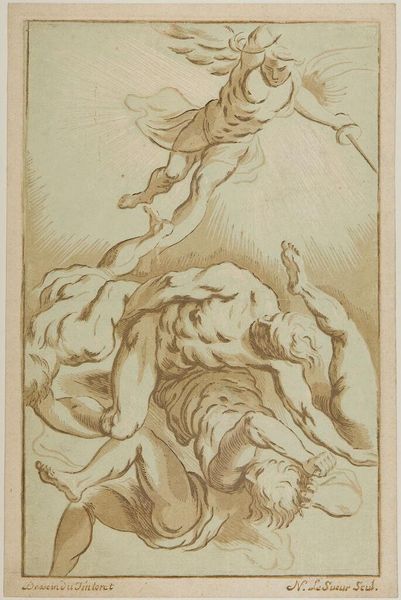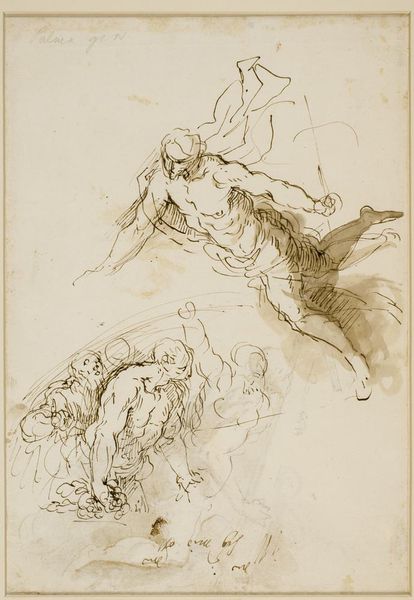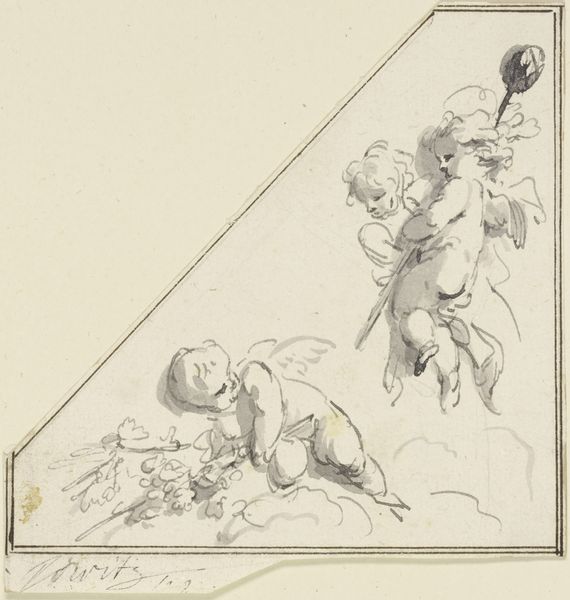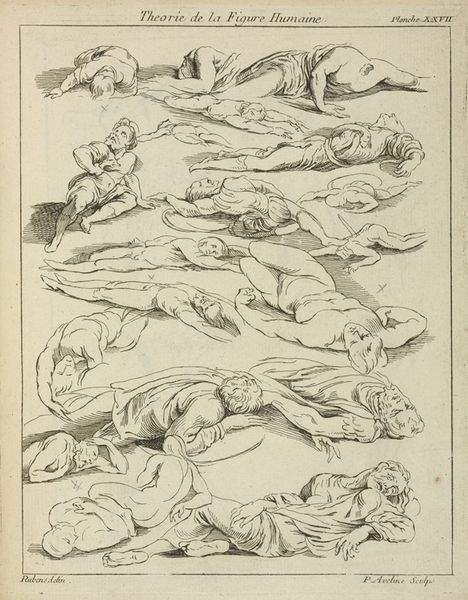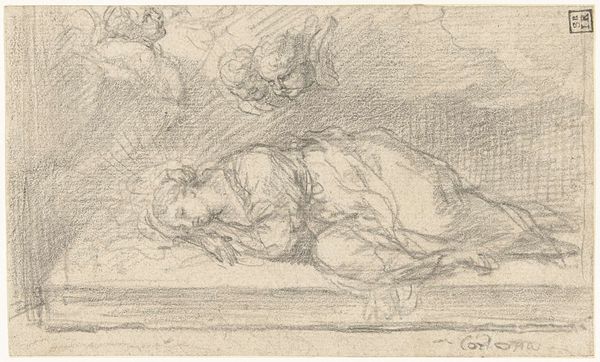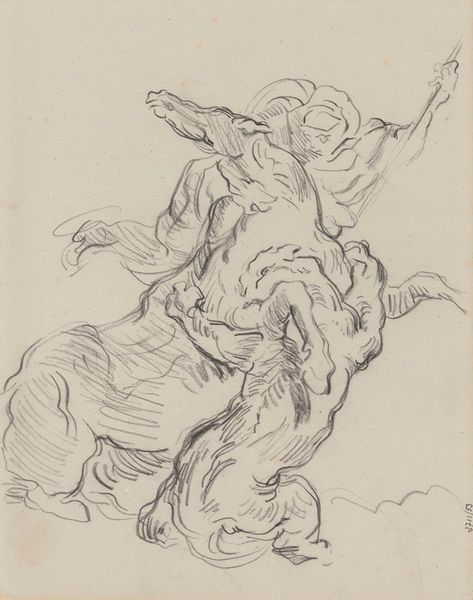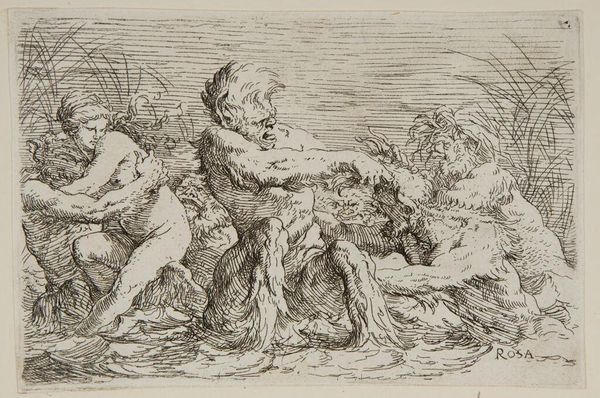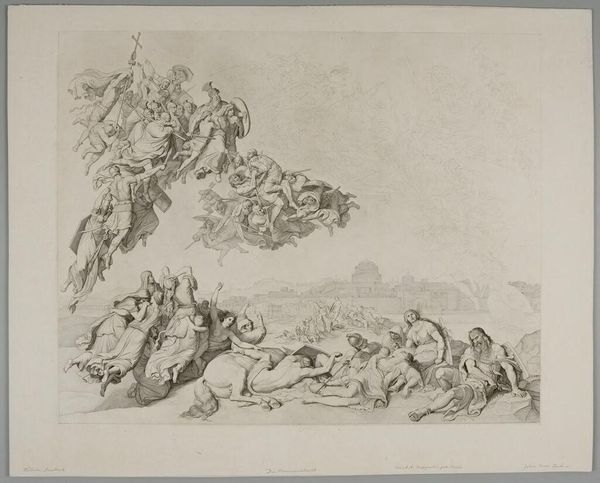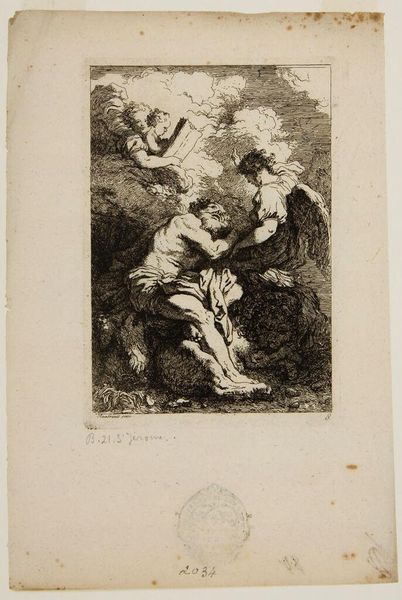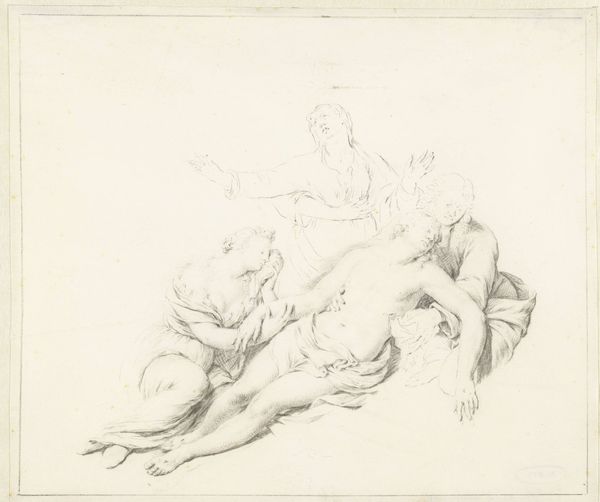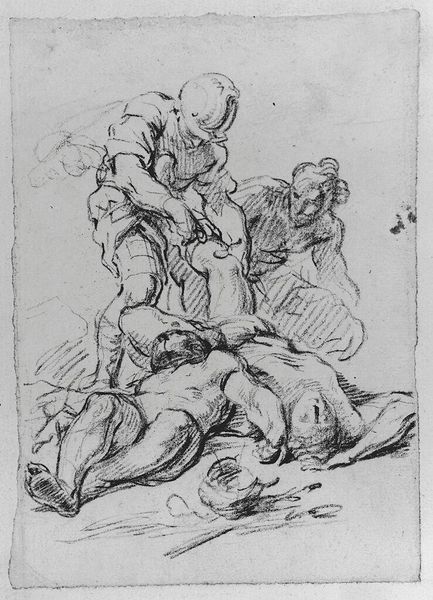
Studies of a Recumbent Male Figure, Said to Be for a Picture of the Deluge
0:00
0:00
Dimensions: support: 202 x 160 mm
Copyright: CC-BY-NC-ND 4.0 DEED, Photo: Tate
Curator: This is Giovanni Battista Cipriani's "Studies of a Recumbent Male Figure, Said to Be for a Picture of the Deluge," housed here at the Tate. What strikes you first? Editor: The overwhelming sense of helplessness. The figures are sprawled, almost discarded. Is this about powerlessness in the face of a greater force? Curator: Perhaps. The deluge, a powerful symbol across cultures, often represents cleansing or divine punishment. Cipriani was likely exploring these themes through the male form. Editor: And the bodies themselves— idealized yet vulnerable. There's a tension here, between the classical form and the abject state they are depicted in. Curator: The figure becomes an icon of suffering, of humanity stripped bare. Cipriani offers a study in contrasts, the beauty of the human form against a backdrop of devastation. Editor: It’s interesting how the figures, repeated, amplify this sense of collective suffering, almost as if they are echoes of each other. Curator: Indeed. They become representative of a shared human condition, a visual metaphor for our vulnerability. Editor: Considering the tumultuous times Cipriani lived through, perhaps this also reflects societal anxieties beyond the religious narrative. Curator: A compelling thought. The Deluge, after all, could symbolize many forms of societal collapse. Editor: It gives you pause, doesn't it? Curator: It does. Art like this invites us to reflect on enduring themes of humanity, resilience, and the forces that shape our world.
